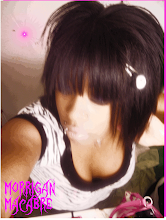History of Tattooing
The history of tattoos dates back to 12,000 years BC. Tattooing is one of the oldest forms of art, and it is believed that the first tattoos were created by accident. The art form had been claimed over the years by many countries’ tribal groups and ethnic groups. Tattoos have always played an important role in ritual and tradition. We will prolly never know what group of people were the first to mark their skin. Tattooing did not begin in one specific place on earth and spread like most phenomenons. All places and all societies have practiced the tattooing in some way.
. The word “tattoo” is very modern. Many people believe that it derived from the Polynesian root word “tatao” which translates to “to tap” but researchers suggest that it derives from the Tahitian word “tatu” which means “to mark”.
In recorded history the earliest tattoos can be found in Egypt during the time of the pyramids. When the Egyptians expanded their empire the art form spread to other civilizations like Crete, Greece, Persia, and Arabia and then spread from there. The Chinese adopted the form around 2,000 B.C.
In ancient time tattoos were used for many reasons. The Greeks used tattoos for communication among spies. Romans used it to mark criminals and slaves. In western Asia the Ainu people used it to show social status. Females were marked to show their place in society. People were also marked to show what tribe they belonged to. In the western hemisphere the early Brits used tattoos in ceremonies. The Danes, Norse and Saxons tattooed their family crests.
In 787 A.D., The pope banned tattooing, but it still thrived in Britain until the Normans invaded the country in 1066. Thus, Tattooing disappeared from western culture from the 1100s to the 1500s. In 1691, William Dampher, a sailor and explorer who traveled the South Seas, re-introduced tattooing to the west. Upon returning to London from an exploration he brought a heavily tattooed Polynesian named Prince Giolo who was put on exhibition as a money making attraction and became a sensation. In the late 1700s another explorer named Captain Cook brought a heavily tattooed Polynesian man named Omai to London and he became the trendsetter of the tattooing fad. Soon many people of the upper class were getting small tattoos on discreet places on their bodies.
In 1861, Samuel O’Reilly, an American tattoo artist, invented the first electronic tattooing machine. He opened up a shop in Chatham square in New York City. During this time tattooing was decreasing in popularity in other parts of the country, but in this small section of New York it was all the rage. It was also during this time that cosmetic tattooing became popular. When the depression hit in the 1920s, Chatham Square lost it’s appeal and the center of art moved to Coney Island. Although many shops had sterilization equipment few used them. Newspapers started reporting storied of blood poisoning, Hepatitis, and other diseases. Thus the government stepped in and put a health code violation into effect and many Tattoo shops were shut down, and Tattooing became illegal. In the late 1960s peoples take on Tattoos changed. And today tattooing is more popular than it has ever been. Because of the rise in popularity, Tattoo art has been placed in the category of fine art.
Tattoos are a very important form of art. If you look at a person with tattoos on their body it can tell you all about that person. For example, many people get tattoos with the names of their children, or someone who died who was very close to them. Over the years, the process of tattooing has changed but the art form still remains the same.
Thursday, March 20, 2008
Writing 3
Posted by Morrigan Macabre at 7:27 AM
Subscribe to:
Post Comments (Atom)



0 comments:
Post a Comment